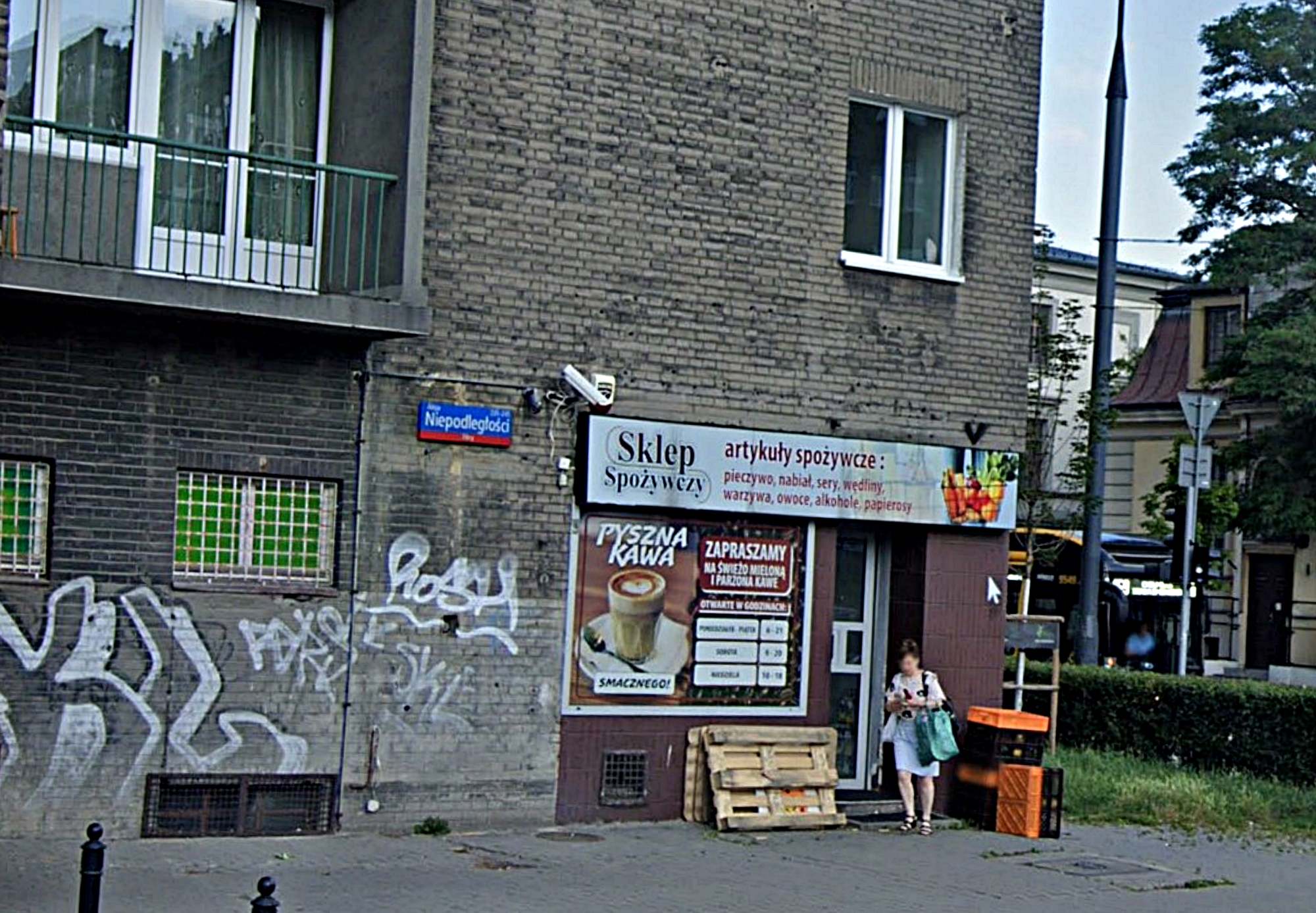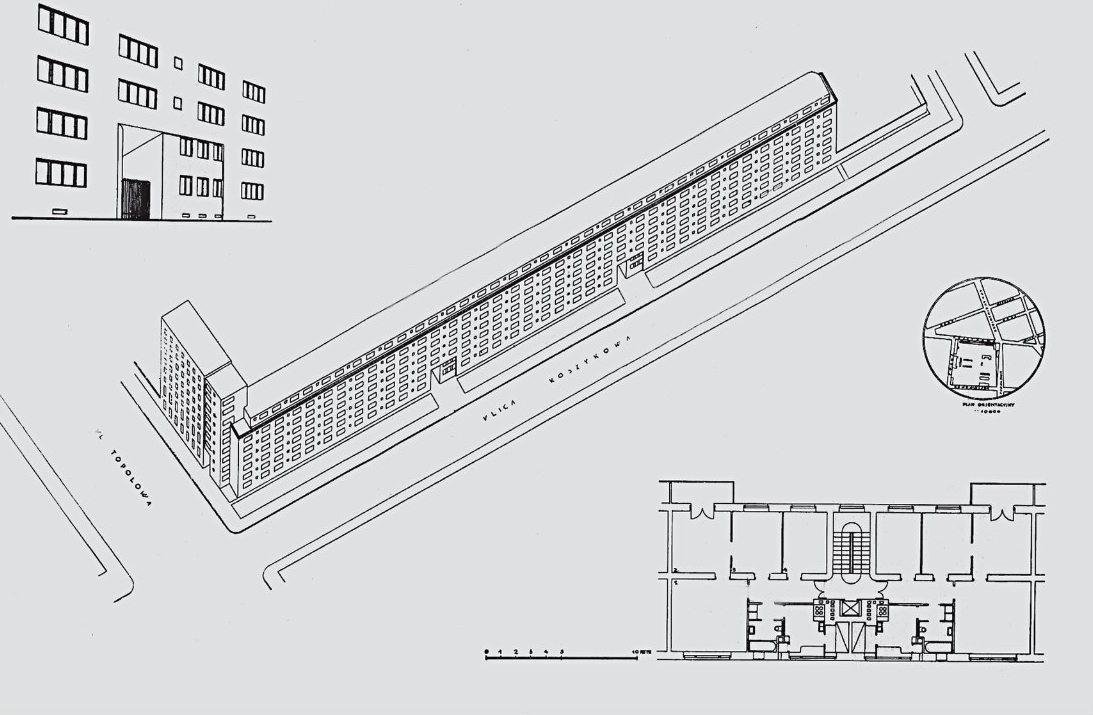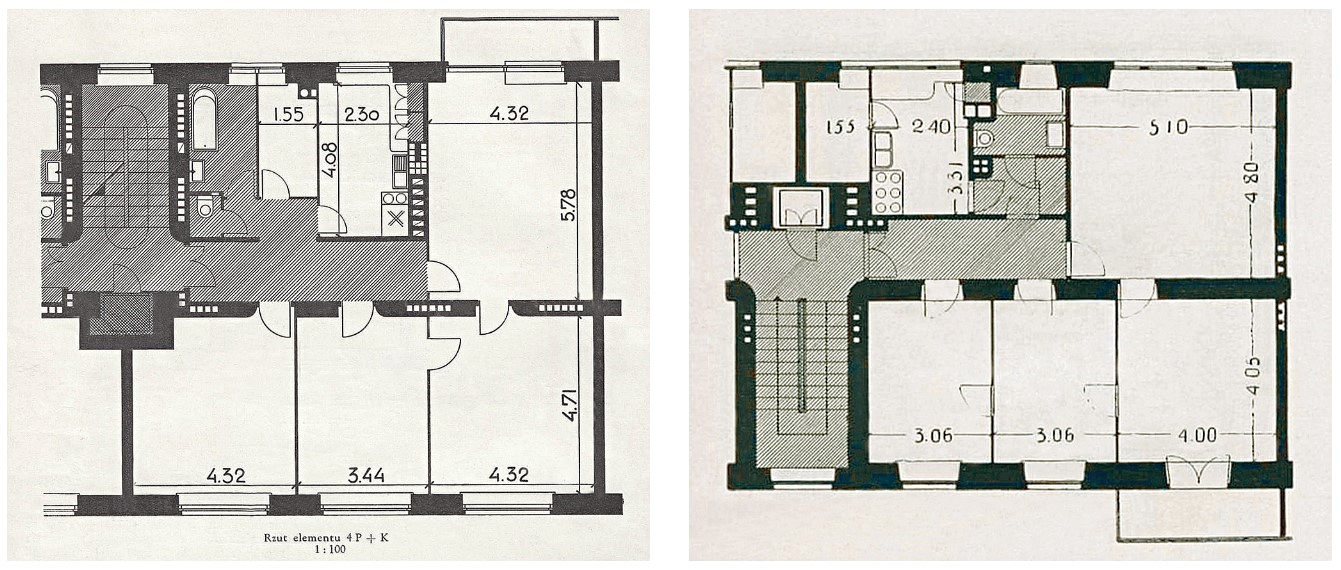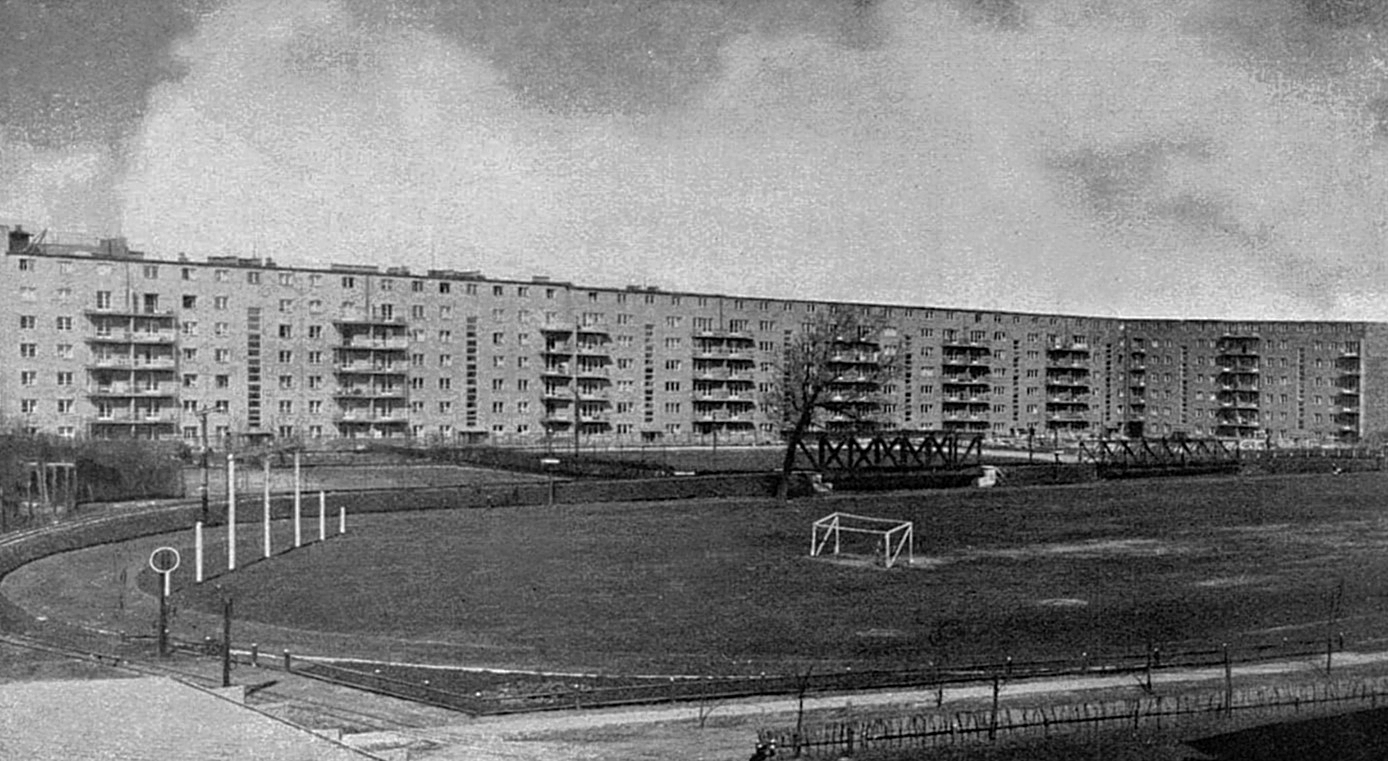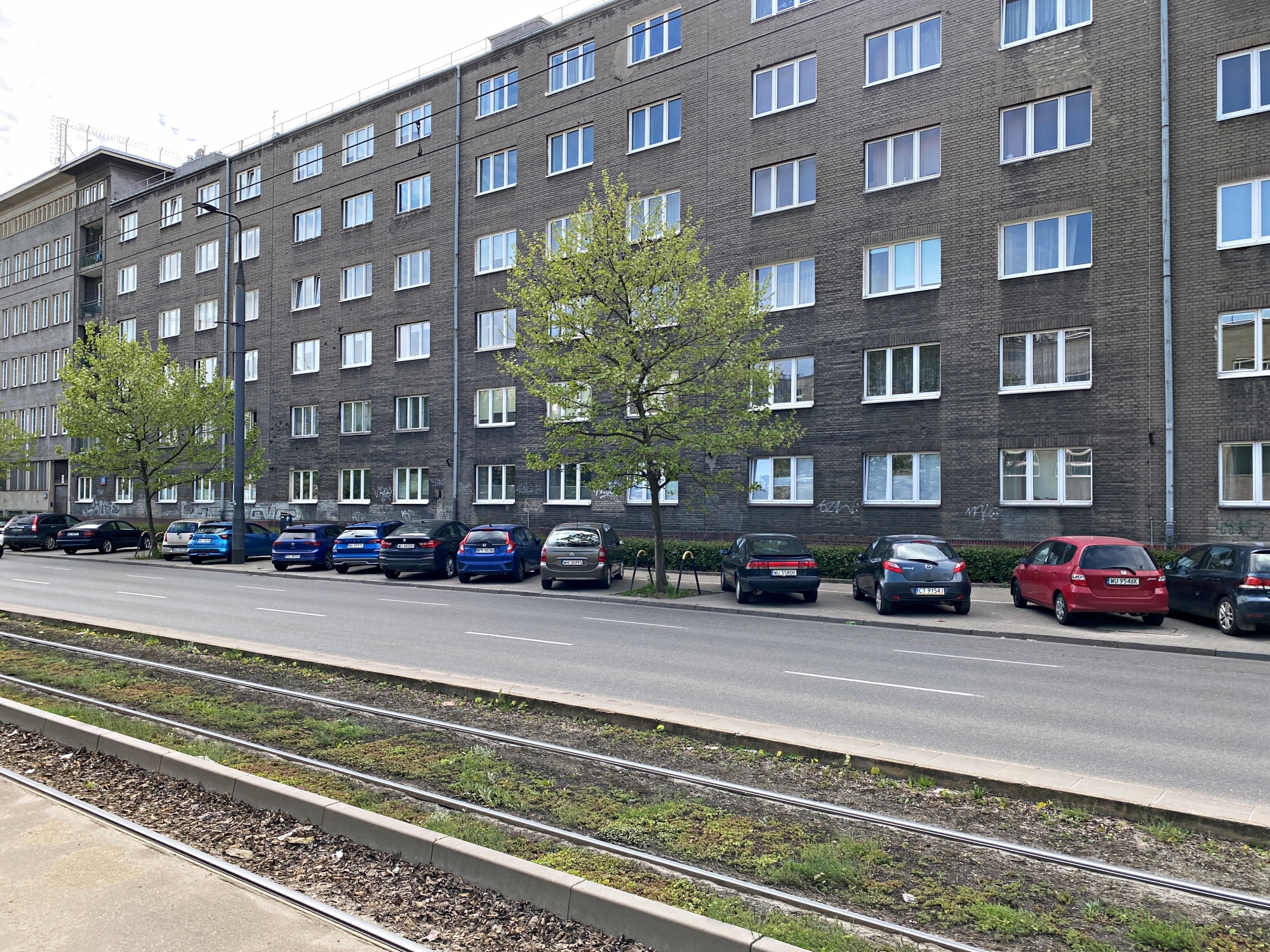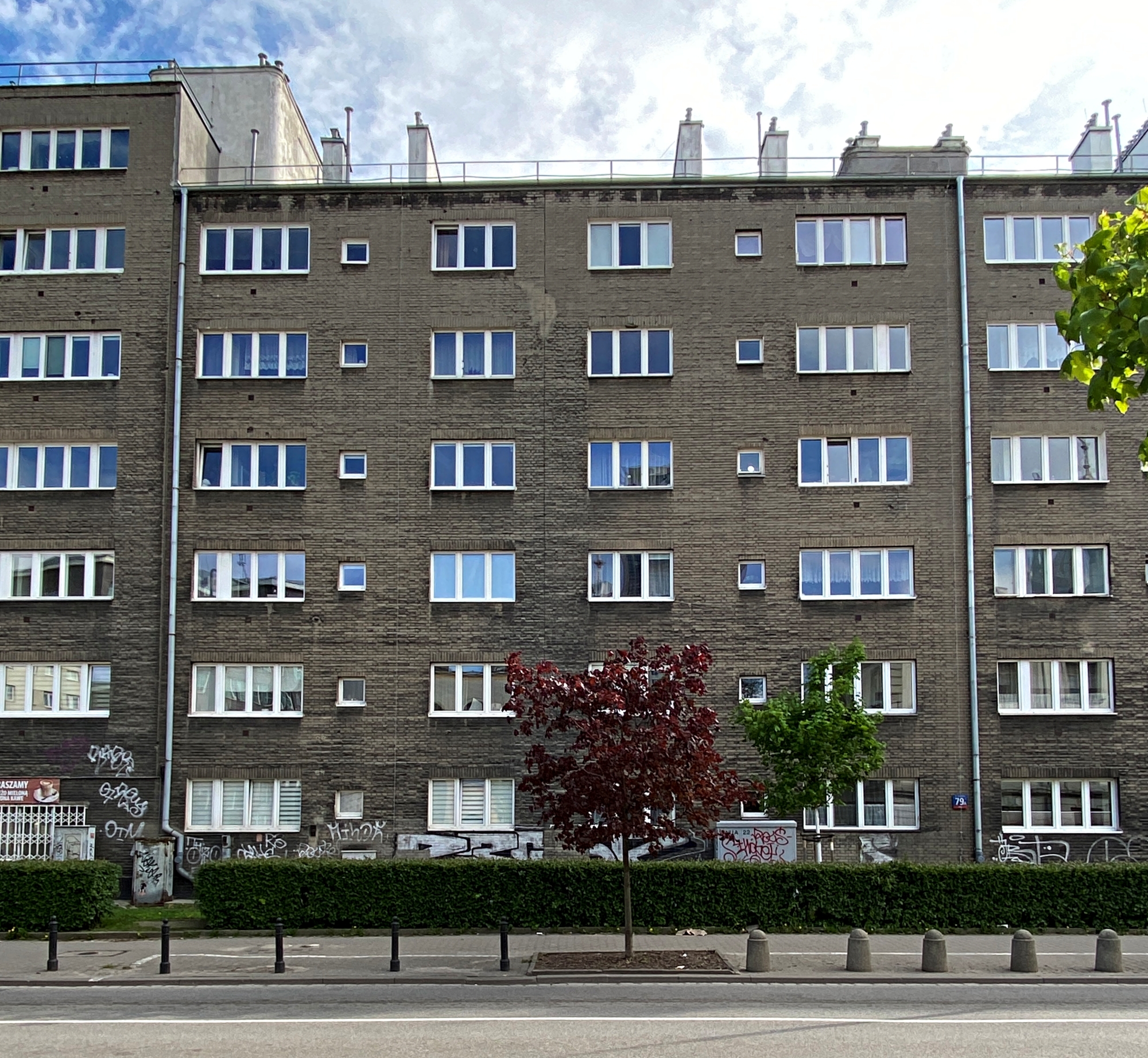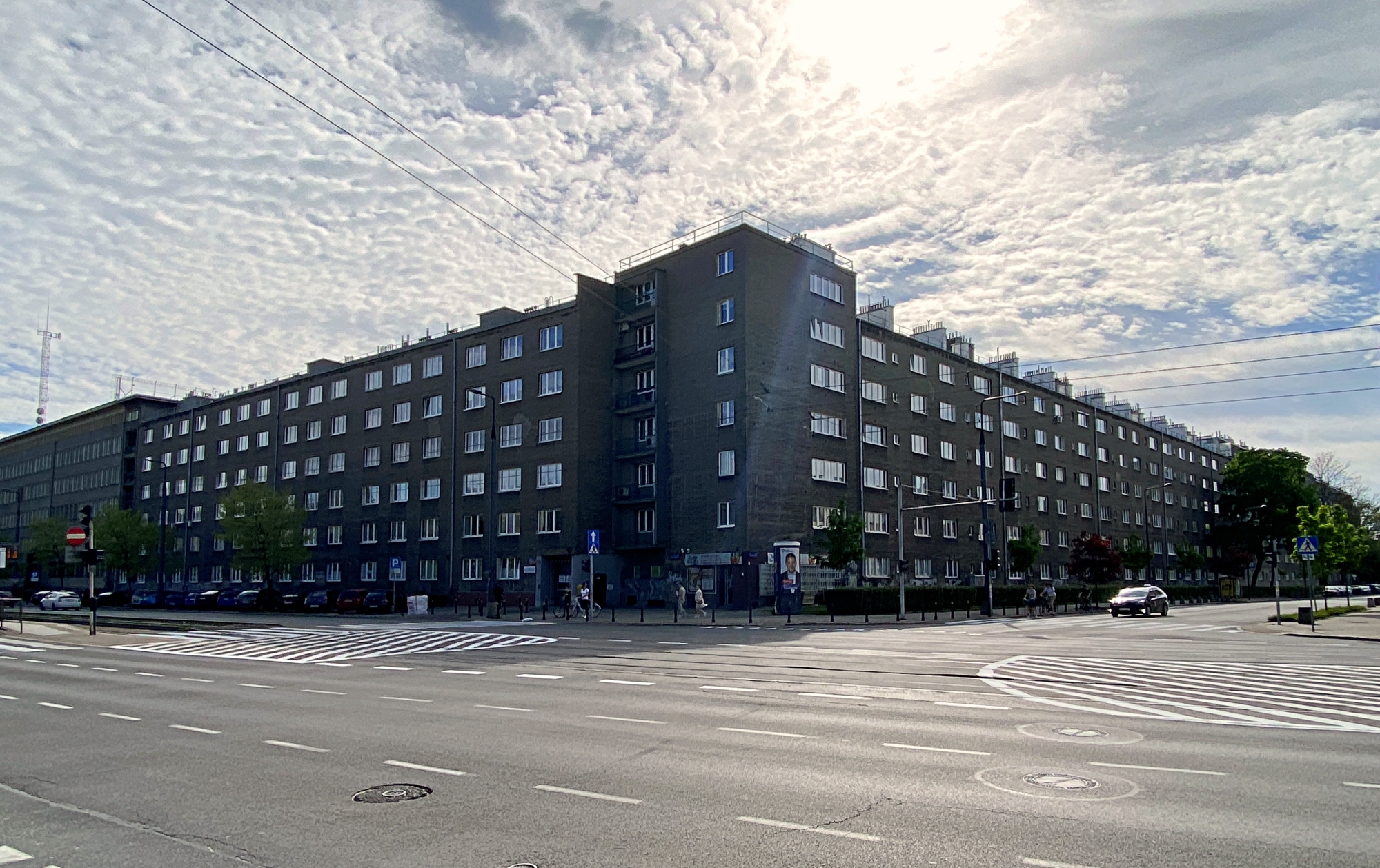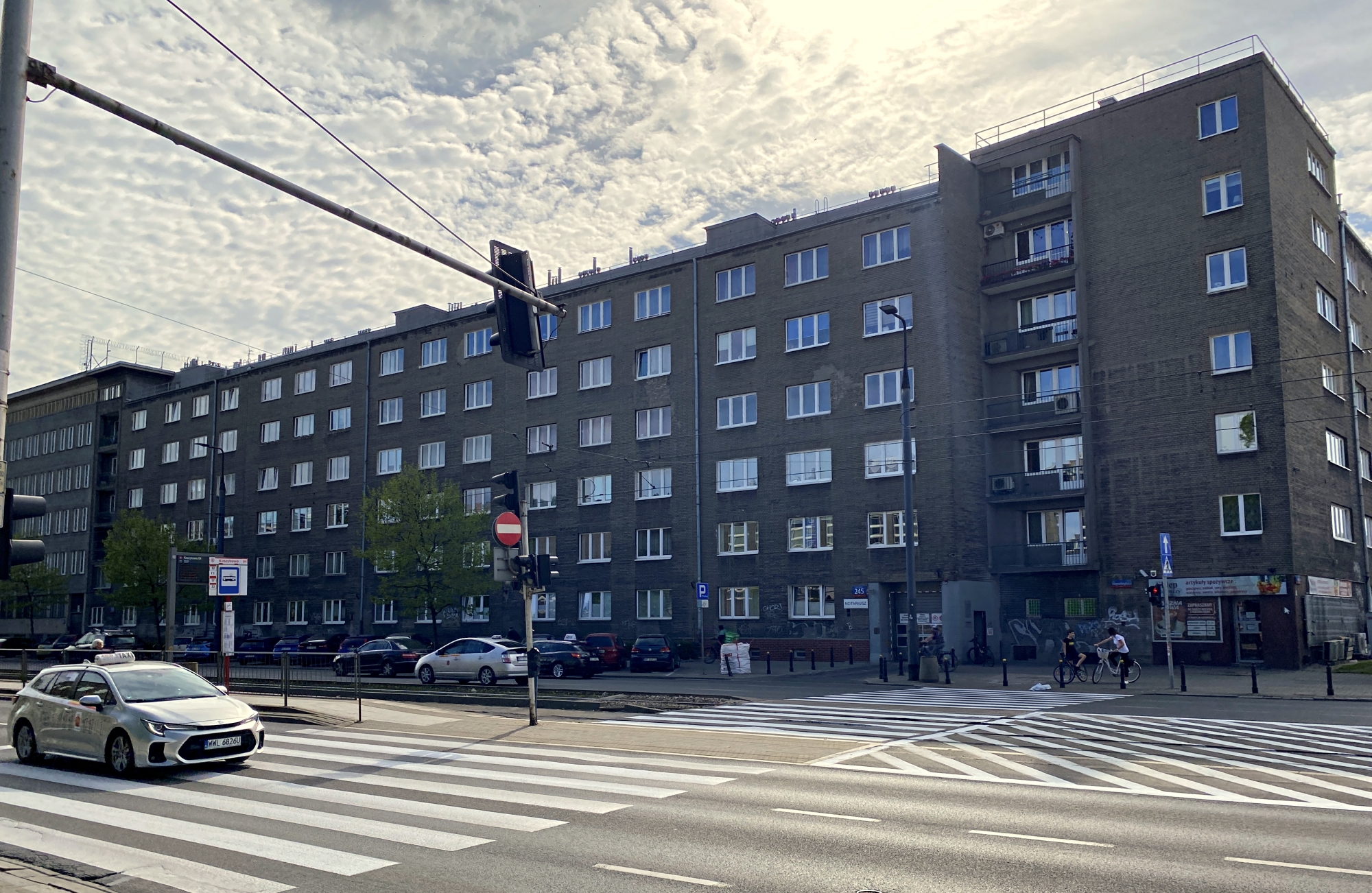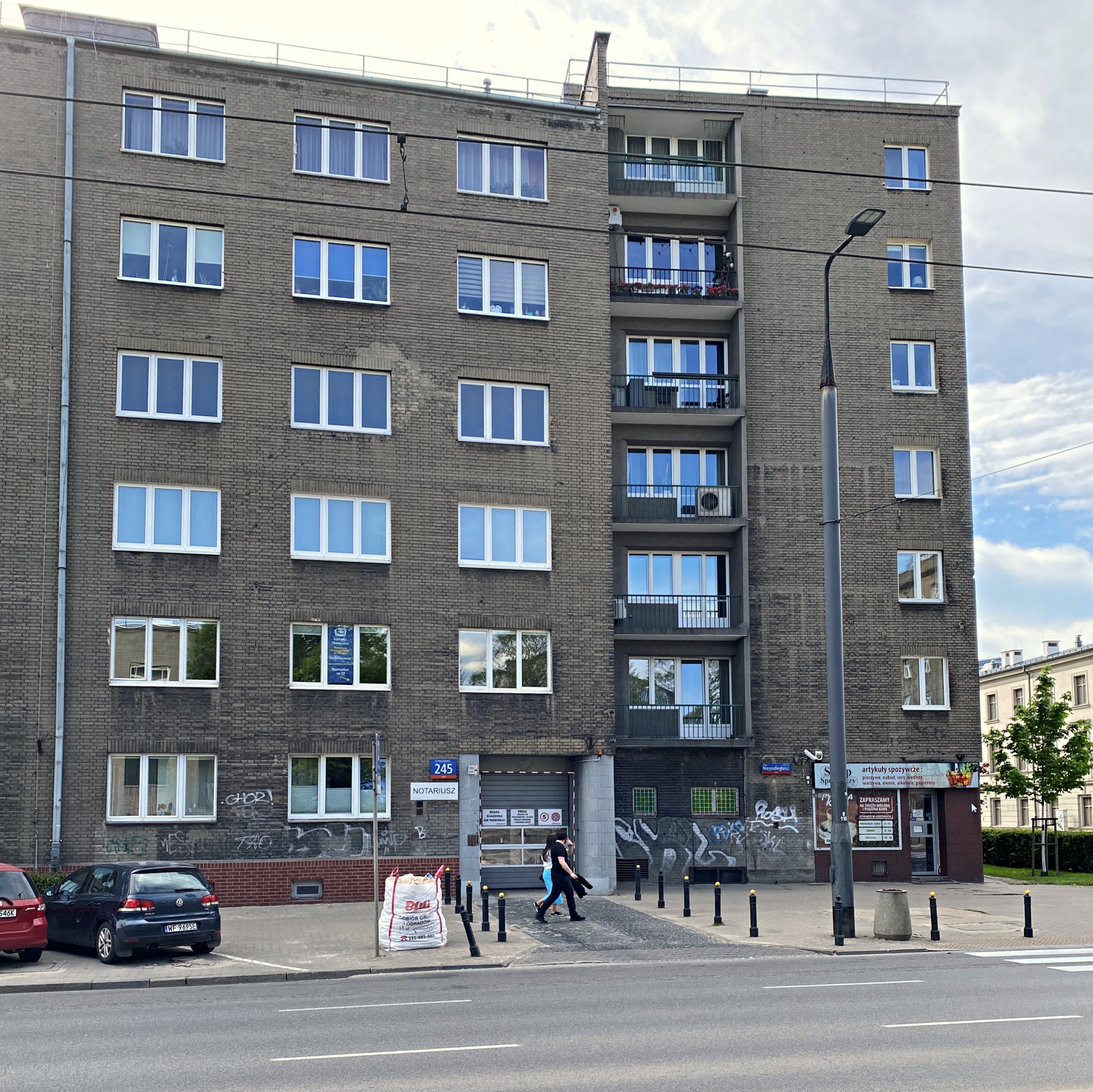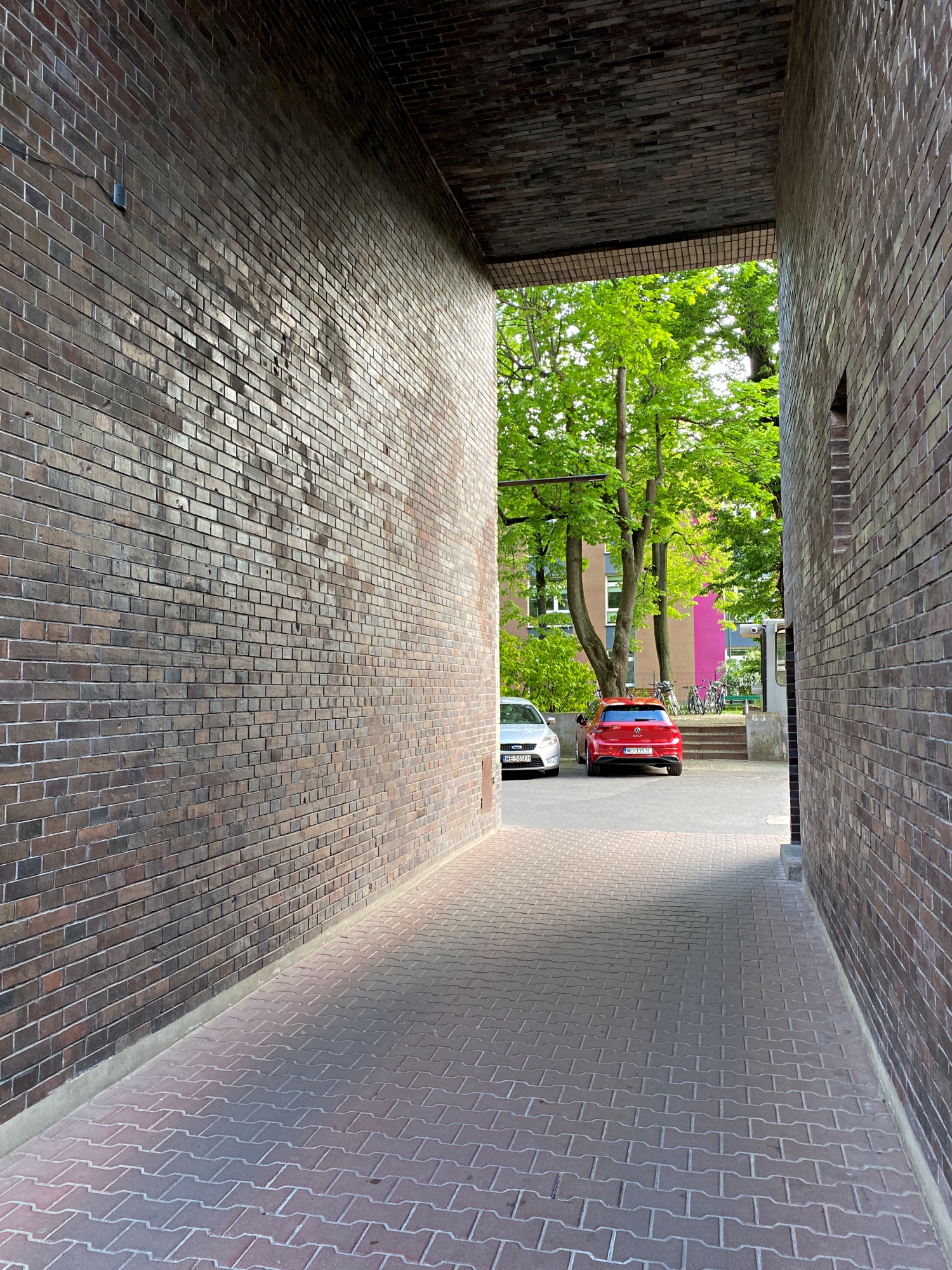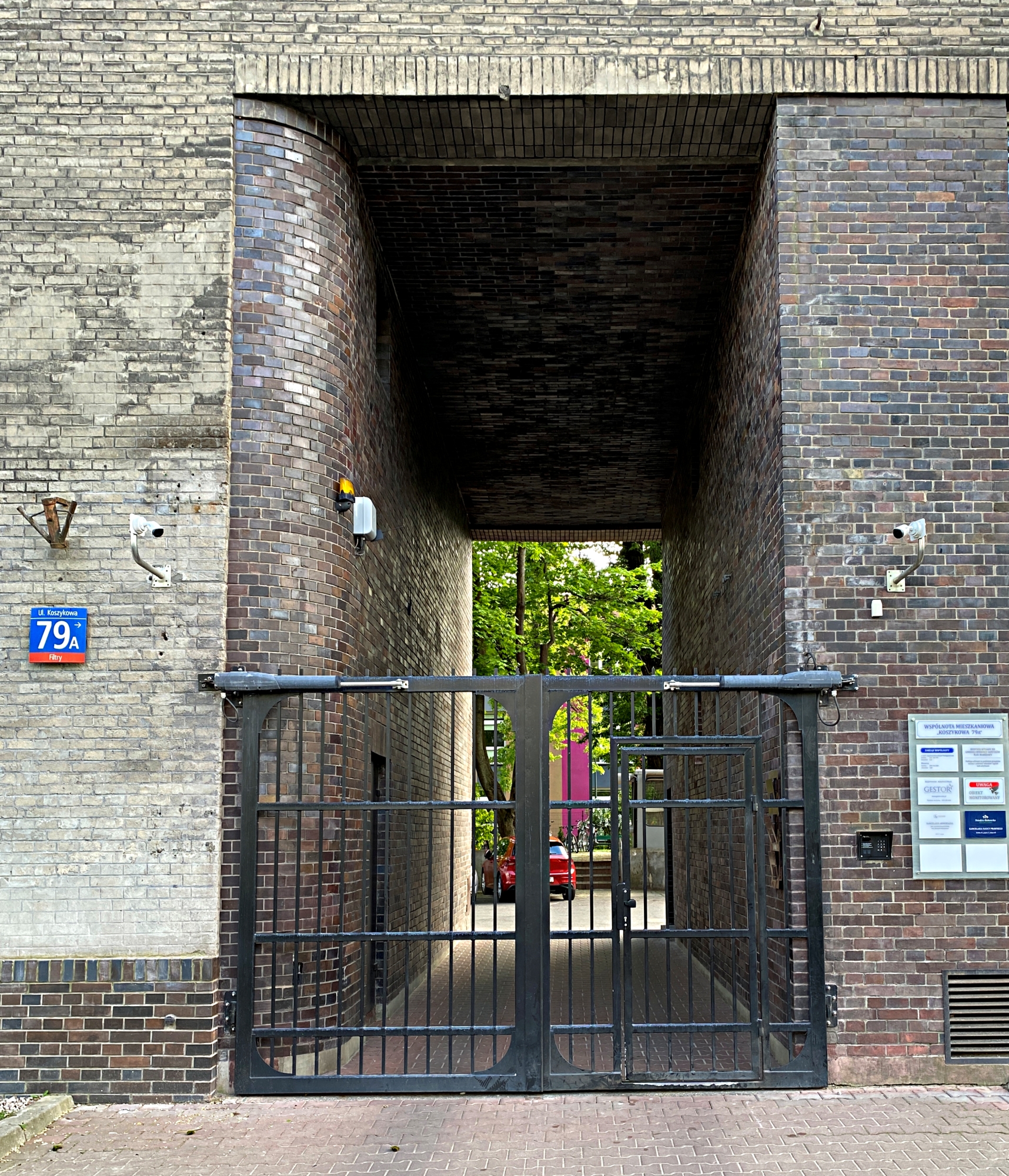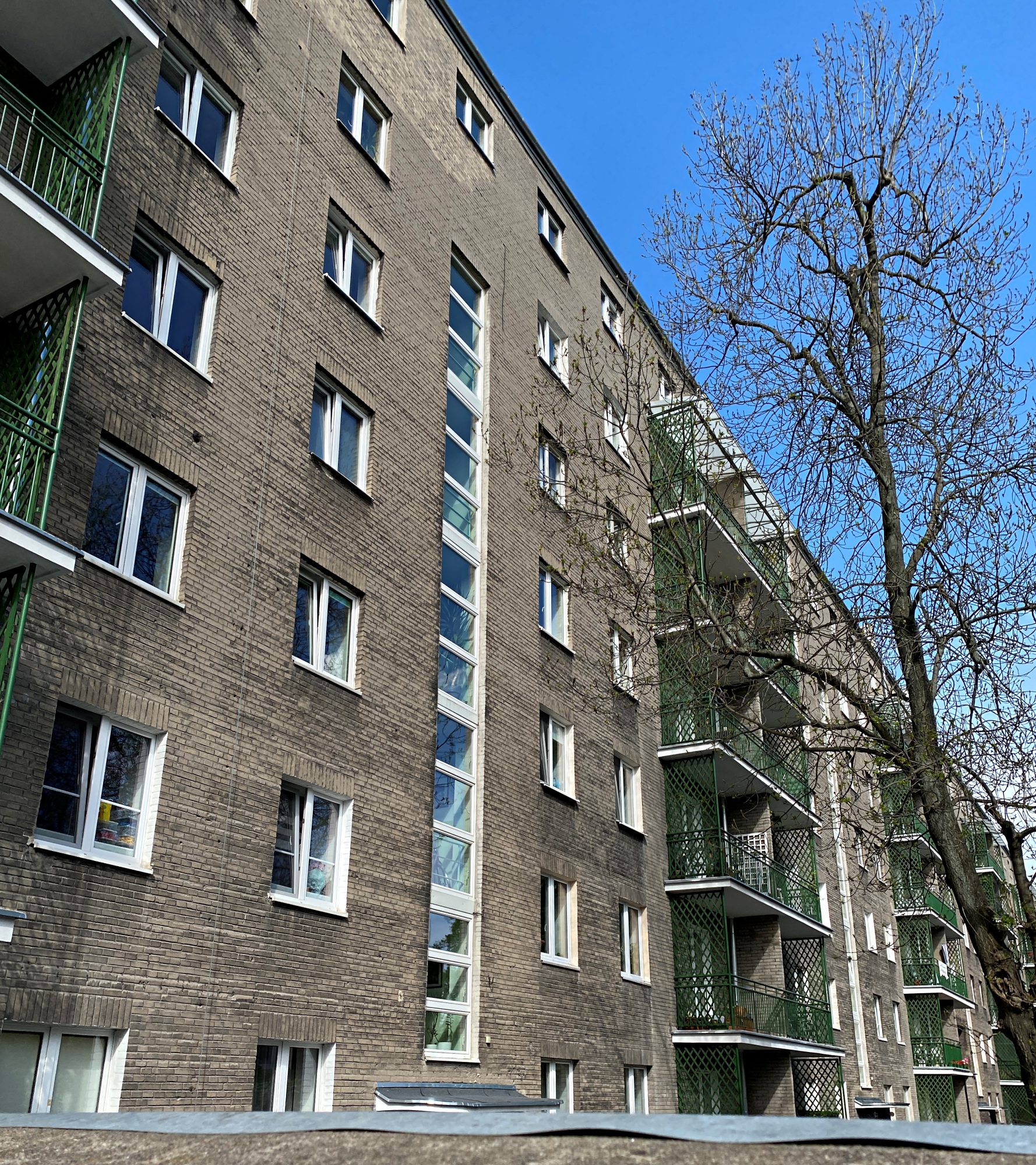The Officers’ House on the corner of Niepodległości Avenue and Koszykowa Street is the largest of the residential buildings erected by the Military Accommodation Fund in the capital. The monumental edifice was built in the 1930s in a functional style. Before the war, it was inhabited by tenants generally belonging to the senior command staff of the infantry and the Navy. The building survived the Second World War, and on its façade today one can see souvenirs of the fighting during the Warsaw Uprising.
The house was built in 1932-33 to a design by Romuald Gutt and Józef Jankowski on the site of the former Jerozolimskie Barracks buildings. The two longer wings were built on the side of Koszykowa Street, the shorter ones on Niepodległości Avenue. Two gateways were placed in the corner and at the end of the longer wing. The austere façades, devoid of any ornamentation, are faced almost entirely in grey cement brick. Brown clinker tiles are only used in the ground floor of the corner shop.
The Officers’ House, view from the corner. Photo: Dwelling Houses of the Military Lodging Fund, Report 1931-1933, Warsaw 1934.

Balconies were designed at the junction of the two wings and on the side of the courtyard, grouped in pairs. Only the extreme balconies on the west side are characteristically rounded. The large white windows originally had muntin bars, now only retained originally in a few openings. The building demonstrates Romuald Gutt’s characteristic use of cement bricks and construction of form by juxtaposing stereometric volumes. The block consisted of 164 units with 943 rooms, located on seven (partly six) storeys. They were accessed from 14 staircases, equipped with lifts.
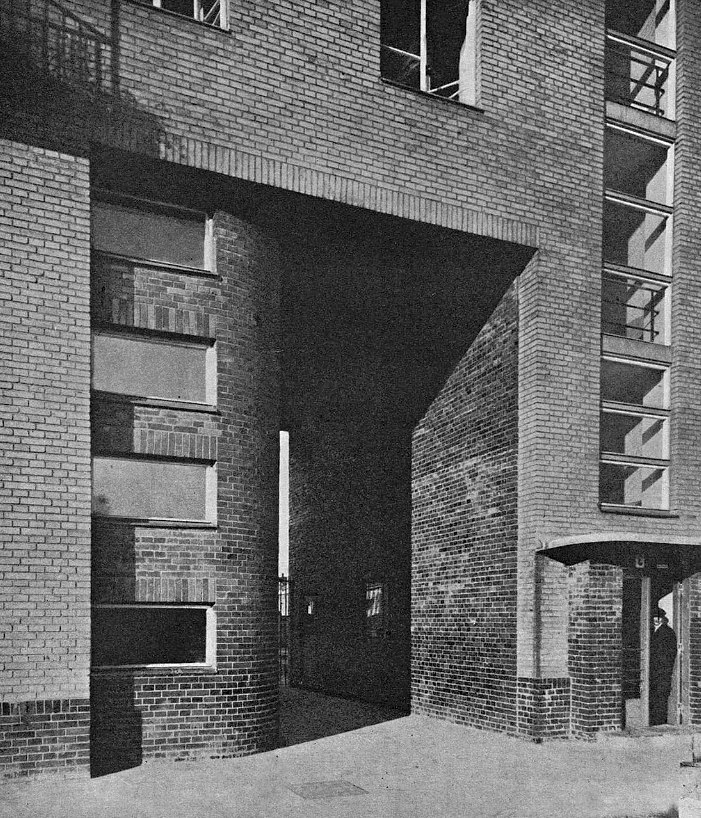
The windows of the staircases form vertical stripes and their floors are lined with terrazzo with decorative stripes in black. The kitchens were equipped with coal cookers, gas burners, boilers and so-called cold cupboards, i.e. cupboards-pantries, which at the time served as refrigerators. The walls of the bathrooms were tiled with white tiles and the floors with terracotta laid in an elegant white and grey pattern. The floors of the flats’ rooms and corridors were covered with oak parquet floors laid in a herringbone pattern.
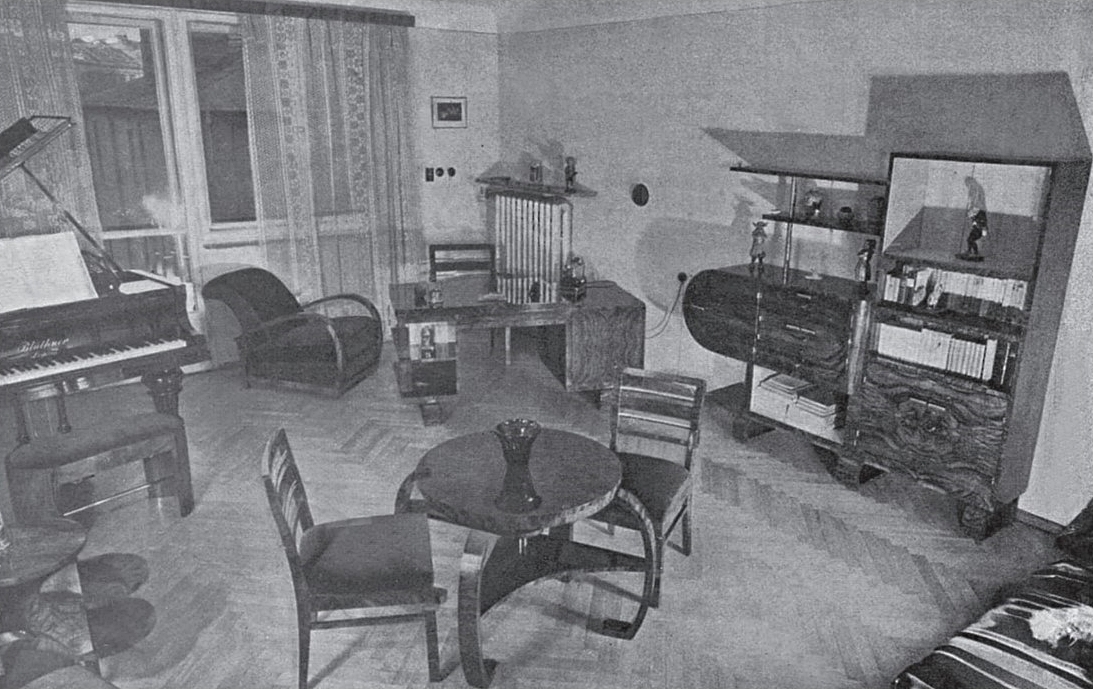

During the occupation, the block was used by the German army and thus avoided destruction. The facades of the building are covered in several places with gunshots from the insurgent fighting. Many of the pre-war residents did not return here after the end of the war. They fell in 1939, fell victim to the Katyn massacre or remained in exile. After the war, it was settled by a large part of the executive staff of the People’s Polish Army (generals and colonels).
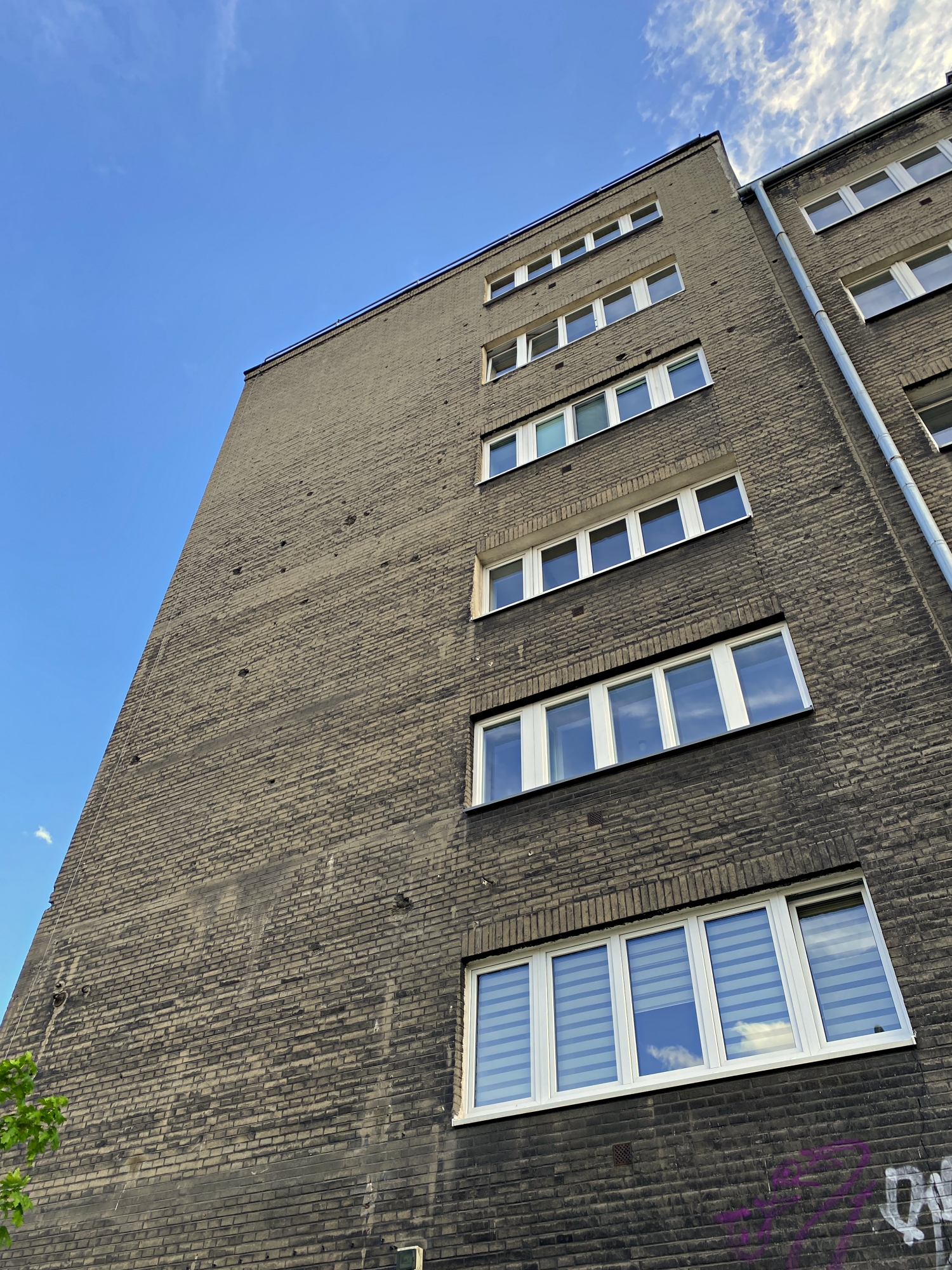
In the 1990s, a series of renovation works began to be carried out, during which the original, precisely designed architectural details disappeared, the window and door woodwork was replaced without caring for its original divisions and material, the staircase decoration was changed, and the well-thought-out layouts of the flats began to be adapted to the fashion for combining the living area with the kitchen, or to the needs of renting, by demolishing partition walls. A partial renovation of the house’s façade was carried out between 2020 and 2021.
The block is currently still in residential use.
The shop of the Warszawska Spółdzielnia Spożywców “Społem” in the 1960s and today. Source: NAC – National Digital Archive www.nac.gov.pl/ and Google Maps
Source: czmurek.com, ochocianie.pl, journals.indexcopernicus.com
Read also: Modernism | Warsaw | Architecture in Poland | Facade| Curiosities| whiteMAD on Instagram


